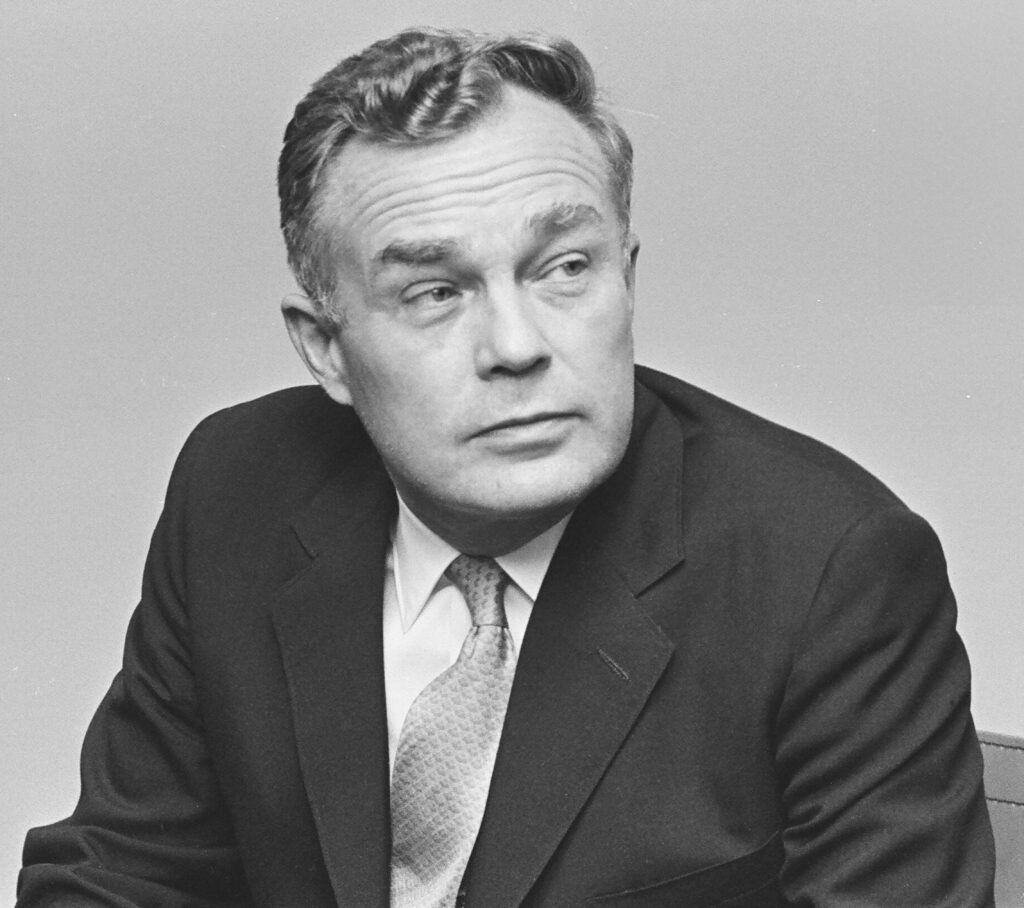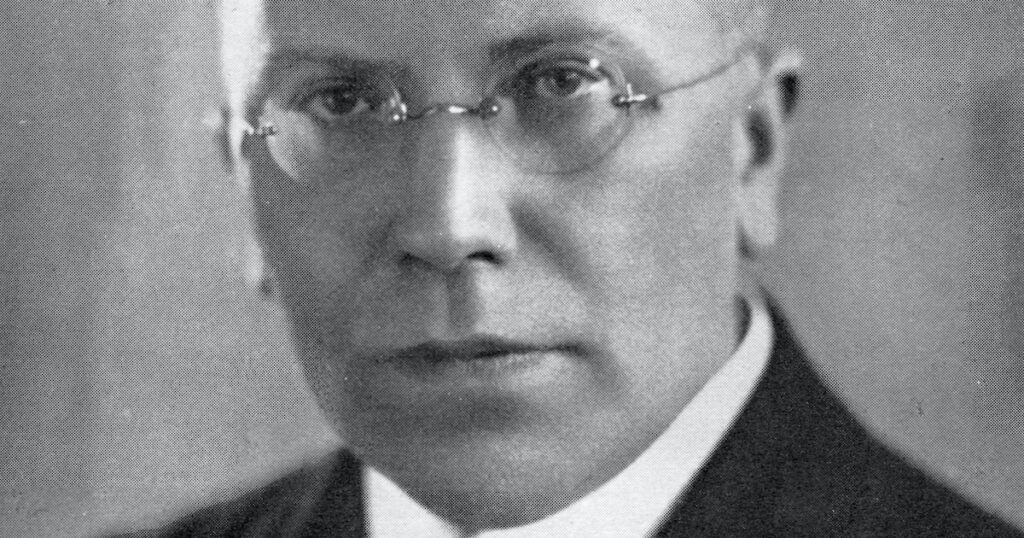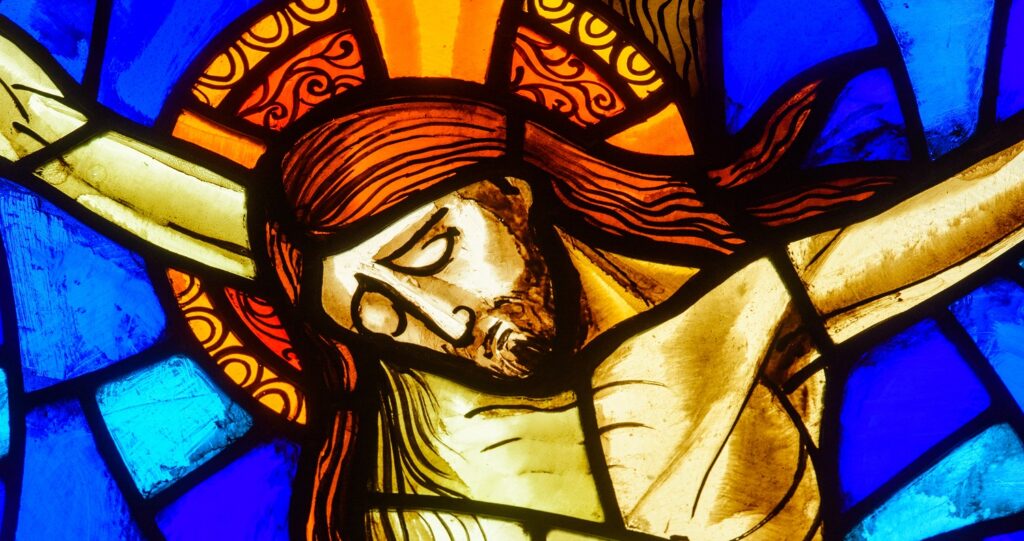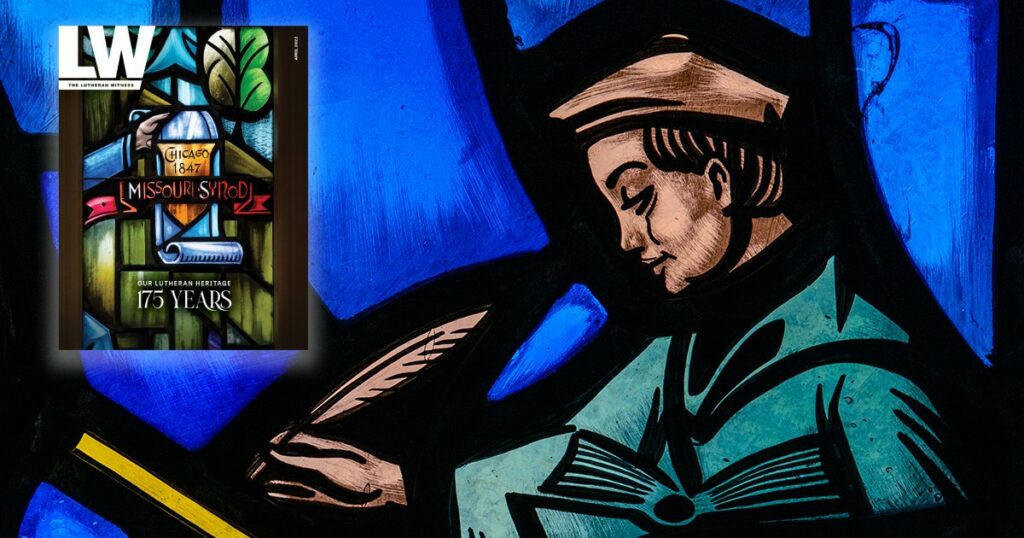J.A.O. Preus II
A.D. 1920–1994
This preacher, teacher, translator and LCMS president confessed the joyous reality of Christ and His resurrection found in Scripture.

In this series, Lutheran historian Molly Lackey traces the history of the church, from the time of the apostles through the twentieth century. As the Body of Christ, our history transcends time, country and citizenship: “God’s Word is our great heritage.”
Imagine you are a seminarian at Concordia Seminary, St. Louis. You stumble out of bed — overslept, again — on Tuesday, Feb. 19, 1974. Campus has been tense: Last month, the seminary president, John Tietjen, was suspended over allegations of false teaching, and most of the faculty and your classmates are boycotting class in solidarity. You’ve kept attending, a decision that has cost you several friends. It’s all such a mess. Your classmates roll their eyes at your quaint beliefs about the Bible, telling you that this or that passage is allegorical, or unreliable, or not important because it’s not the Gospel. It’s enough to make your head spin.
Unfamiliar sounds from your open dorm room window break your momentary reverie. In the quadrangle below, you see a makeshift-graveyard, white wooden crosses bearing names of Dr. Tietjen, faculty, classmates — friends. There are men from the news station snapping photos of a crowd gathered beneath Luther Tower. You lean out of the window to watch as they nail boards over the archway, blocking your view. You listen and catch the beginning lines of “The Church’s One Foundation,” soon drowned out by the shuffling of hundreds of feet. You steady yourself on the windowsill, the cold February air sharp on your sweat-drenched face. What on earth is happening to Concordia Seminary — and to the Missouri Synod?
From young professor to Synod president
If you really were a seminarian at Concordia Seminary in the early 1970s, you would be very familiar with Jacob Aall Ottesen Preus II. J.A.O. Preus was born on Jan. 8, 1920, into the prominent Preus family: His grandfather was a Lutheran seminary professor who helped organize the Norwegian Synod; his father was governor of Minnesota; his brother would become president of Concordia Theological Seminary in Fort Wayne, Ind. J.A.O. Preus became a professor and later president of Concordia Theological Seminary (still, at that point, located in Springfield, Ill.) in the late 1950s through the 1960s. His claim to Lutheran fame would come primarily, though, from the events that occurred during his tenure as president of The Lutheran Church—Missouri Synod from 1969 to 1981.
During the 20th century, German (and, later, American) Lutherans embraced new ways of studying Scripture that questioned the historical and factual accuracy of the Bible. While studying Scripture alongside history is a helpful way to deepen our understanding of the Bible, we should not put our reason above God’s Word. This was exactly what was happening, though, and some scholars — including American Lutheran ones — began doubting the supernatural elements of the Bible, like six-day creation, a global flood, and Jonah being swallowed by a giant fish.
Other errors soon followed. Concordia Seminary professors began engaging in a false way of interpreting the Bible known as “Gospel reductionism,” or reducing the entire message of Christianity to a diminished, empty pseudo-Gospel. As Lutherans, we rightly understand that God speaks to us with two words: His Law (His will for how we ought to be) and His Gospel (His proclamation that, in Christ, our sins — the many and insurmountable ways we have breached His Law — are paid for and will no longer be held against us). At the time, professors at Concordia Seminary came to the conclusion that only those parts of the Bible which are Gospel are authoritative to the Christian — not the Scripture, Law and Gospel, in its entirety. Jesus’ words on the existence of hell, for example, or Paul’s teachings against homosexuality, could be tossed out along with the supernatural parts of Scripture. Even the Resurrection itself — the purest, but most supernatural, Gospel — was called into question.
Preserving Scriptural faithfulness amid encroaching errors
When he became Synod president in 1969, Preus represented the many people in the LCMS who desired a return to more traditional and orthodox interpretations of Scripture, so he arranged for a fact-finding committee to investigate what was being taught at Concordia Seminary. This committee published their findings, with direct quotations from interviews of seminary faculty, making public the harmful teachings that were forming soon-to-be LCMS pastors. The faculty and student body majorities vociferously resisted these attempts by the Synod to crack down on false teaching, and they launched personal attacks and slander against Preus and his administration. Nevertheless, it was the confessional Lutheran teachings of Preus and the many pastors and laypeople he represented that won the day. John Tietjen was suspended in January of 1974, and a month later most of the faculty and student body walked out of campus — though they immediately returned to eat lunch! This group formed Seminary in Exile, or Seminex. They eventually attracted some LCMS congregations, too, that left the Synod and eventually merged with several other Lutheran bodies to become the Evangelical Lutheran Church in America (ELCA).
A schism of this magnitude — thick with antagonism, lies, divided families and heartache — was massively hard on J.A.O. Preus. But he was not alone in this fight. In a 1986 lecture, Preus remarked that he was able to “have some sanity left” after the Walkout for two reasons:
I credit it partly to the good Lord and partly to the fact that I was able to spend an hour every day of my life with a very wise, bright, sound, orthodox, biblical, confessional Lutheran by the name of Martin Chemnitz.
If you’ve been following along in this series, Martin Chemnitz should be a name you recognize: The “Second Martin” held the fledgling Lutheran church together following the deaths of Luther and Melanchthon, navigating doctrinal crises by pointing doggedly back to Scripture and the testimony of orthodox theologians throughout church history. J.A.O. Preus was a prolific scholar of Chemnitz, bringing much of his work into English for the first time ever. In 1994, the year that J.A.O. Preus died, he published his final scholarly work: The Second Martin: The Life and Theology of Martin Chemnitz. May we, like J.A.O. Preus, find encouragement to continue steadfast in God’s Word through the examples set for us by His saints.
Editor’s Note: This is the final installment of Molly Lackey’s series on great figures in church history. Check out the whole series here.





